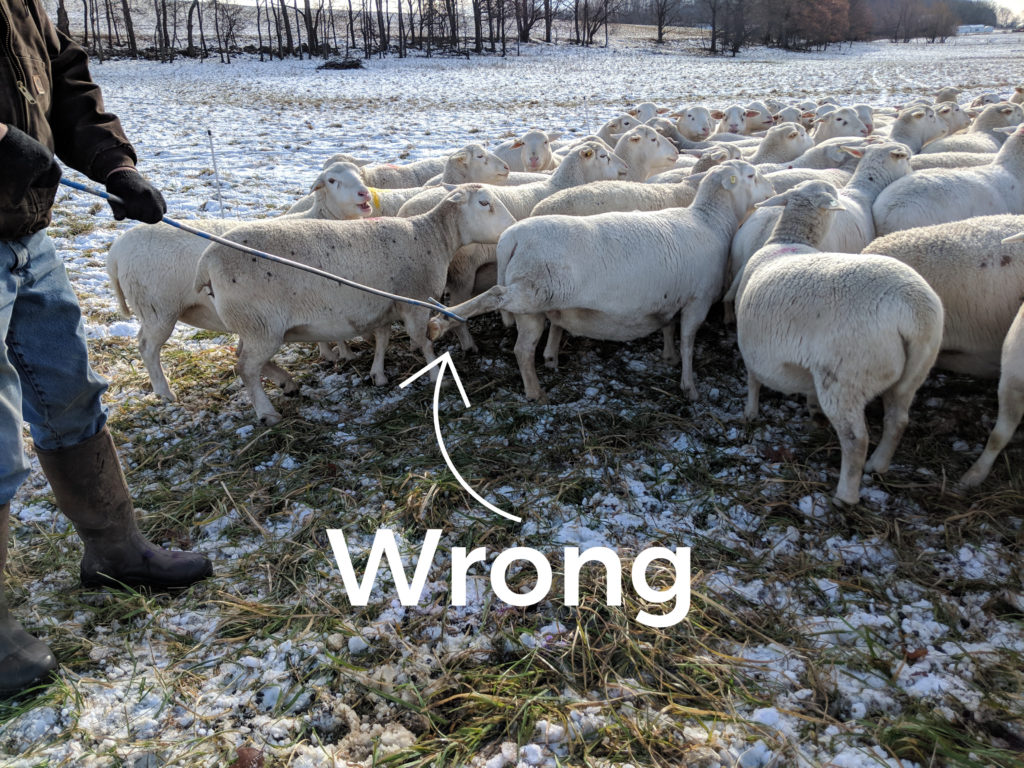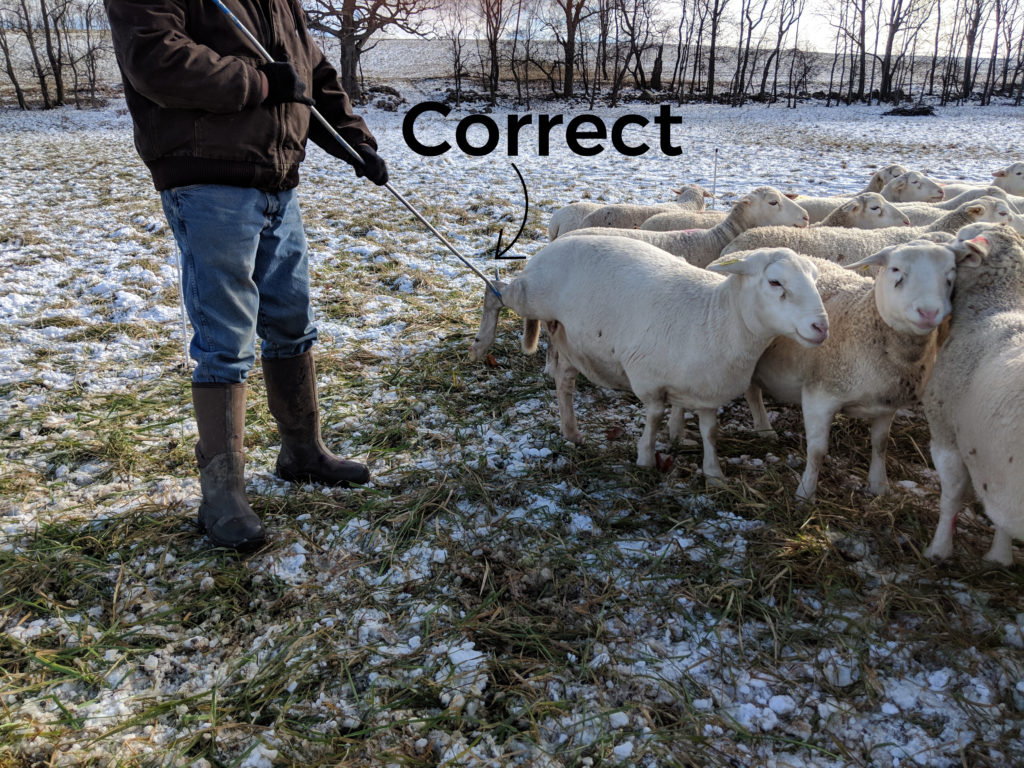How to Catch a Sheep
Think like a sheep and you will be able to catch it.
How often have you been outsmarted by a sheep when you tried to catch it? Here is some advice on how to win that battle of minds. Sheep are not stupid like many people claim. In a sheep’s world, all of what it does makes perfect sense. Its survival instincts may dictate what it does. So, think like a sheep and you will be able to catch it.
Let’s assume you see a sheep in the pasture, and you notice that one limps. Perhaps a string or some wire is wrapped around it or a foreign object is stuck in its hoof. You want to catch it. If you feed grain, it will be relatively simple to catch it when it is at the feeder. Doing grass-fed makes this a bit more difficult.
Before you get to use your crook, you want the flock tightly together. It is easy when they are in the barn, where you can have a pen set up. When they are on pasture, you can push them in a corner of a grazing cell or build a pen with an electric netting in that corner, where you can catch a sheep easier. It is always helpful if an attempt to catch a sheep can be incorporated in the daily routine. Any change of such routine makes sheep being more alert and harder to catch.
Any sheep you want to catch ought to be pushed or moved towards the other sheep. This way it gets “stuck” in the flock, so to speak. The bigger the flock, the better this works. If you separate it from the flock and run after it, it will likely be faster than you.
There are two kinds of crooks to catch a sheep. The neck crook is a typical British tool. I have not mastered or tried to master a neck crook. I have no advice about using one. My tool of choice, that I have been using for 37 years, is a leg crook. Leg crooks can be purchased whole, or you can purchase the head only and mount that one on any suitable stick. I am prohibited to name a single source for leg crooks in this article (and there are not many), so just search on the Internet “leg crook for sheep.”

This is the wrong way to catch a sheep with a leg crook.
Ulf Kintzel/ White Clover Sheep Farm

The right way to hook the sheep in the right spot above the joint in between shank and leg.
Ulf Kintzel/ White Clover Sheep Farm
The two pictures indicate the right and the wrong way of using the leg crook. The wrong way will leave the sheep with a lot of power in the hind leg and an incentive to fight the fact that she is caught. The right way renders the sheep with little opportunity to fight, when it is hooked in the right spot above the joint in between shank and leg and pulled somewhat upward instead of pulling back.
I am often getting inquiries about the use of a herding dog. In many cases, the flock owners have just a few sheep or a small flock. The assumption often is that the dog will do the job on its own. The disappointment is often palpable when I advise against using a herding dog and indicate how much work goes into training a dog, how much knowledge and skill the owner needs to have, and how much regular work such dog needs. In most cases, people are better off letting their kids help or shake a bucket with grain or, if your sheep are grass-fed, alfalfa pellets to have them follow to a good location to catch them.
When you use acrook, remember that you have one good and “easy” try to catch a sheep. If your first try is unsuccessful, any subsequent attempt is exponentially harder because now the sheep knows that you are trying to catch it. Hold your crook low in a neutral position when you approach the sheep. Ideally, walk along the sheep side before you attempt to catch it. Following it with a raised crook, indicating you are after it, will make the sheep run faster away from you than you can follow it.
Whatever you do, remember sheep aren’t as stupid as people think they are. There are just too few people who are able to outsmart them.

